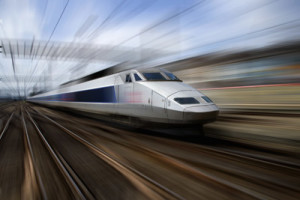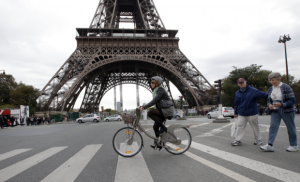How to Get Where You’re Going
Posted on November 22nd, 2013 by Jonah Arellano in Uncategorized | No Comments »
You’ve learned the language, you’ve studied the culture, and you’ve successfully booked your flight. Now what? Often overlooked by tourists and left for last minute is transportation. Once you’re in France, how do plan to get where you want to go?
France’s transportation network is one of the densest in the world. With more than one million kilometers of roads, and over 30,000 Km of railways, the system of transport looks a bit like a web centering on Paris. Once you arrive, you’ll be an itsy-bitsy spider with a lot of options.
Bicycles
Most towns have at least one bicycle rental shop. Generally, bikes can be rented for a set price per day which is paid in addition to a deposit in case the bicycle is stolen or damaged. Be sure not to leave it locked up outside overnight if you want to see your bike—or that deposit—again. Also, be sure to take the necessary safety precautions, the roads rarely have proper shoulders; instead, try taking back roads that usually have much lighter traffic.
Bicycle law:
· bicycles must have two functioning brakes, a bell, a red reflector on the back and yellow reflectors on the pedals
· After sunset and when visibility is poor, cyclists must turn on a white light in front and a red one in the rear.
· When being overtaken by a car, cyclists are required to ride in single file.
You may even find that some city centers can even be explored completely on foot if one is so inclined.
Trains and Busses
France’s rail network reaches almost all parts of the country. The down side: since the majority of the railroads radiate outward from Paris, going from one provincial town to another that is situated on a  different major line heading out of Paris can get complicated. If you’re transferring in Paris, be sure to check what station your connecting train is leaving from; it may be different from the one you arrive at.
different major line heading out of Paris can get complicated. If you’re transferring in Paris, be sure to check what station your connecting train is leaving from; it may be different from the one you arrive at.
Travel by bus can be hit or miss. It’s generally used for travel in rural areas with few rail lines, but bus services can be slow and irregular at times. If you are planning to concentrate the majority of your journey in rural areas, a car may be a better option.
Cars
Sometimes there’s just no other option than to get your own set of wheels. This is especially the case if you want a bit more freedom and wish to visit more remote parts of France. All that independence comes at a price, traffic and parking can be a nightmare, and then there’s the matter of documentation (you may need to obtain an international driving license).
If you do decide that you want to travel the roads of Paris by automobile here are a few things to remember:
· The minimum driving age is 18.
· In France, you drive on the right hand side of the road.
· The speed limit is 50km/h (30mph) in cities, 90km/h (60mph) in regional areas and 130km/h (78mph) on motorways unless indicated otherwise.
· Seat belts are a requirement by law and must be fastened by passengers in the front as well as in the back of the vehicle at all times.
· The use of a mobile phone while driving is illegal unless in use with Bluetooth or a hands-free device.
· The maximum blood alcohol limit is 0.5mg/ml
· It’s mandatory to have a high-visibility vest and hazard triangle in your car at all times in case of emergency
I hope this gave you a general idea of the options available to you. Once you’ve decided on the best method of transport for your trip, you can get situated with whatever you need to make your visit to France as memorable and stress-free as possible.
Which method would you prefer? Personally, I’m still waiting on jet-packs.







